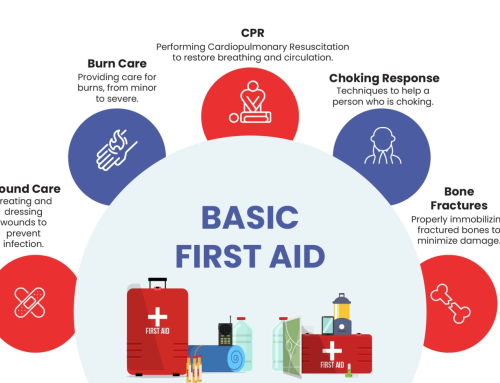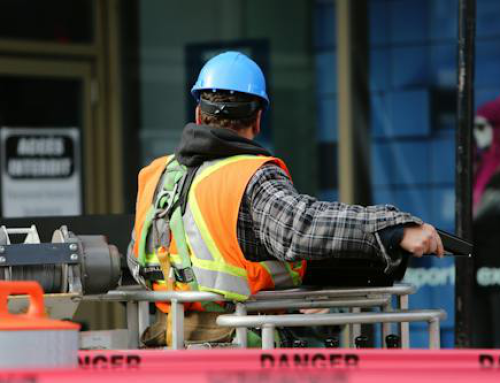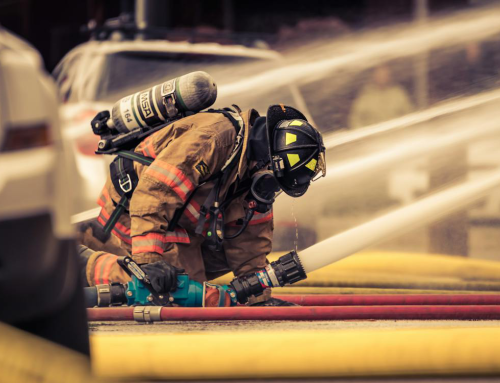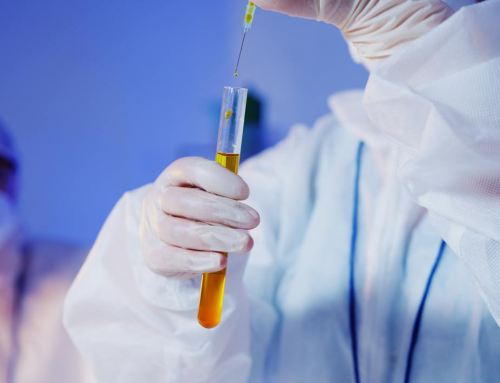In any industry or workplace setting, there are inherent risks and hazards that can pose threats to the well-being of employees and the organization as a whole. These hazards can range from physical dangers like slippery floors and falling objects to chemical exposures and ergonomic strains.
In today’s dynamic work environments, where technological advancements, evolving regulations, and changing work practices are the norm, the need for regular safety inspections has never been greater. That’s why our experts at Metro Safety stress conducting regular workplace safety inspections.
Identifying Workplace Hazards
Identifying workplace hazards is a critical step in ensuring the safety and well-being of employees and, therefore, an integral part of workplace safety inspections. Here are some key points to consider when identifying hazards in the workplace:
- Physical Hazards:Physical hazards encompass a wide range of dangers that can cause harm to employees. These hazards include slippery floors, uneven surfaces, unguarded machinery, exposed electrical wires, and falling objects. Physical hazards can lead to slips, trips, falls, and other accidents if not properly addressed.
- Chemical Hazards:Chemical hazards refer to substances that can cause harm to employees through exposure, ingestion, or inhalation. These hazards include toxic chemicals, corrosive substances, flammable materials, and irritants. Chemical hazards pose risks such as skin irritation, respiratory problems, and even long-term health effects if proper precautions are not taken.
- Biological Hazards:Biological hazards arise from exposure to biological agents such as bacteria, viruses, fungi, and parasites. These hazards are commonly found in healthcare settings, laboratories, and environments where there is potential contact with bodily fluids or contaminated materials. Biological hazards can lead to infectious diseases and other health problems if not adequately controlled.
- Ergonomic Hazards:Ergonomic hazards stem from improper workstation design, repetitive tasks, and poor body mechanics. These hazards can result in musculoskeletal disorders such as back pain, carpal tunnel syndrome, and tendonitis. Ergonomic hazards are prevalent in office environments, manufacturing facilities, and jobs that involve repetitive movements or prolonged periods of sitting or standing.
- Psychosocial Hazards:Psychosocial hazards relate to the social and psychological aspects of work that can impact employees’ mental health and well-being. These hazards include workplace stress, harassment, bullying, violence, and inadequate social support. Psychosocial hazards can lead to increased absenteeism, decreased productivity, and adverse effects on mental health if not addressed effectively.
- Environmental Hazards:Environmental hazards include factors such as extreme temperatures, noise pollution, air quality, and radiation exposure. These hazards can vary depending on the nature of the workplace and may include exposure to hazardous substances, outdoor elements, or industrial processes. Environmental hazards can lead to respiratory problems, hearing loss, heat-related illnesses, and other health issues if not properly managed.
Implementing Corrective Actions
Implementing corrective actions is a crucial aspect of effective risk management and ensuring the safety and well-being of employees, making it the next most important step in workplace safety inspections. Here are some strategies for implementing corrective actions:
1. Engineering Controls:
Engineering controls involve modifying the physical workplace environment to eliminate or minimize hazards. This may include installing safety barriers, machine guards, or ventilation systems to control exposure to harmful substances. Engineering controls aim to create a safer work environment by designing out hazards and reducing the potential for accidents or injuries.
For example, in a manufacturing facility where workers are exposed to hazardous machinery, implementing engineering controls such as machine guarding can prevent accidental contact with moving parts and reduce the risk of crush injuries or amputations.
2. Administrative Controls:
Administrative controls focus on changing work practices and procedures to reduce employee exposure to hazards. This may involve implementing safety policies, procedures, and training programs to ensure employees understand and follow safe work practices. Administrative controls also include scheduling and job rotation to minimize exposure to hazards and reduce the likelihood of accidents or injuries.
For instance, in a construction site where workers are exposed to fall hazards, implementing administrative controls such as providing fall protection training and establishing clear procedures for working at heights can help prevent falls and mitigate the associated risks.
3. Personal Protective Equipment (PPE):
Personal protective equipment (PPE) serves as a last line of defense against workplace hazards when engineering and administrative controls are not feasible or sufficient. PPE includes items such as helmets, gloves, safety goggles, respirators, and hearing protection. It’s essential to provide appropriate PPE to employees based on the specific hazards present in the workplace and ensure proper training on its use and maintenance.
For example, in a healthcare setting where workers are exposed to infectious diseases, providing appropriate PPE, such as gloves, masks, and gowns, can help protect employees from exposure and minimize the risk of infection.
Workplace Safety Inspection Checklist
Now that you’ve learned of the various hazards that you need to watch out for and the corrective controls you must employ, here’s a comprehensive workplace safety inspection checklist that you can apply to various industry settings.
1. General Safety Practices:
Emergency exits should be clearly marked and unobstructed at all times. Fire extinguishers must be readily accessible and undergo regular inspections. Emergency lighting should be functional and tested periodically to ensure proper operation during power outages. Additionally, safety signs and labels must be clearly visible and updated to reflect any changes in the workplace environment.
2. Housekeeping and Maintenance:
Housekeeping and maintenance play a crucial role in preventing accidents and injuries. Floors should be kept clean, dry, and free from tripping hazards such as loose cables or spilled liquids. Aisles and walkways must remain clear of obstructions and debris to allow safe passage for employees and equipment. Spills should be promptly cleaned up and properly marked to alert others of potential hazards. Storage areas should be organized, with materials properly stacked and secured to prevent accidents.
3. Personal Protective Equipment (PPE):
Employers must ensure that employees are provided with appropriate PPE for their tasks, such as safety glasses, gloves, and hard hats. PPE should be in good condition and regularly maintained to ensure its effectiveness. Employees should be trained on the proper use and care of PPE to maximize protection against workplace hazards. Designated areas should be provided for storing and donning PPE to encourage compliance with safety protocols.
4. Machinery and Equipment Safety:
Employers must ensure that machinery and equipment are properly guarded to prevent accidental contact with moving parts. Safety devices and emergency stop controls should be functional and easily accessible in case of emergencies. Operators should be trained and certified to use machinery and equipment safely, and routine inspections and maintenance should be conducted to identify and address potential hazards promptly.
5. Hazardous Materials Handling:
Employers must ensure that hazardous materials are properly labeled and stored according to regulatory requirements. Adequate ventilation should be provided in areas where hazardous materials are used to minimize exposure risks. Spill containment measures should be in place and easily accessible in the event of an accidental release. Employees should receive training on the safe handling and disposal of hazardous materials to protect themselves and others from harm.
6. Electrical Safety:
Electrical safety is paramount in any workplace environment to prevent electric shocks, fires, and other electrical hazards. Employers must ensure that electrical outlets and wiring are in good condition and free from damage or defects. Extension cords and power strips should be used safely and not overloaded to reduce the risk of electrical fires.
Electrical panels should be accessible and properly labeled to facilitate maintenance and troubleshooting. Employees should be trained in electrical safety procedures and aware of potential hazards associated with electrical work.
7. Ergonomics and Workplace Design:
Workstations should be ergonomically designed to minimize strain and fatigue and optimize productivity. Chairs, desks, and other furniture should be adjustable to accommodate different users and promote proper posture. Lighting should be adequate and glare-free to reduce eye strain and discomfort. Employees should be encouraged to take regular breaks and stretch to prevent musculoskeletal injuries associated with prolonged sitting or repetitive tasks.
8. Emergency Preparedness:
Employers must have a written emergency response plan in place that outlines procedures for responding to various emergencies, including fires, natural disasters, and medical emergencies. Employees should be trained on emergency procedures and evacuation routes to facilitate a safe and orderly evacuation in case of an emergency. First aid kits and emergency supplies should be readily accessible, and designated individuals should be assigned roles and responsibilities to coordinate emergency response efforts effectively.
Explore Metro Safety’s Workplace Safety Courses
Given the nature of the modern workplace, it’s accurate to conclude that there are no substitutes for workplace safety inspections, as they are essential for identifying potential hazards and taking proactive measures to mitigate risks effectively.
If you’d like to strengthen your organization with these skills, then you ought to connect with our experts at Metro Safety. Since 2008, we have been a leading training center here in British Columbia and have since launched several first aid courses, some designed by the Canadian Red Cross.
We’ve also developed courses on fall protection, confined space safety for monitors and entrants, as well as occupational first aid courses (levels one through three). Learn more about what we do and explore additional resources by visiting our website.












